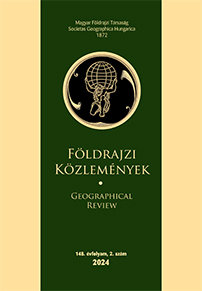A TÁJHASZNÁLAT ÉS TÁJGAZDÁLKODÁS VÁLTOZÁSA A MAROSSZÖGBEN (18– 19. SZÁZAD)
Résumé
Nowadays, 35 independent settlements are located on the Marosszög floodplain, exploiting the opportunities provided by the microrelief. The region’s ecological properties and resources available to society, which change over time, and its natural and landscape characteristics were markedly different from the historical counties of Csongrád and Csanád, and in certain elements the Bánság and also from other regions of the former Torontál county. Marosszö can be divided into several parts from a landscape-geographical point of view, and as a result of the surface development, it has a threefold geomorphological division. The highest areas (88–96 m) are late pleistocene loess-sand free areas. The old holocene high flood plain is located in a lower surface position (82–87 m), while the new holocene low flood plain is located at the deepest level (77–81 m). Starting from the 18th century, in the reorganization process of economic life, mixed (polyculture) farming became dominant, characteristic of the settlement group as a whole. Until the start of the integrated environmental transformation works, society adapted, and its landscape-shaping and environment-transforming activities were only at the local level. The integrated environmental transformation works strongly changed the geographical foundations of social production and the ecological conditions, the former floodplain habitats, floodplain landscapes and habitats, which corresponded to the way of life of livestock keepers and farmers, disappeared. The use of landscape and resources changed and developed significantly, arable farming became dominant. The nature of agricultural activity has shifted towards crop production in fields and animal husbandry in stables.
Copyright (c) 2024 Sándor Kókai, Sándor Frisnyák, Andrea Bányászné Kristóf, Róbert Vass

Ce travail est disponible sous licence Creative Commons Attribution - Pas d'Utilisation Commerciale - Pas de Modification 4.0 International.



